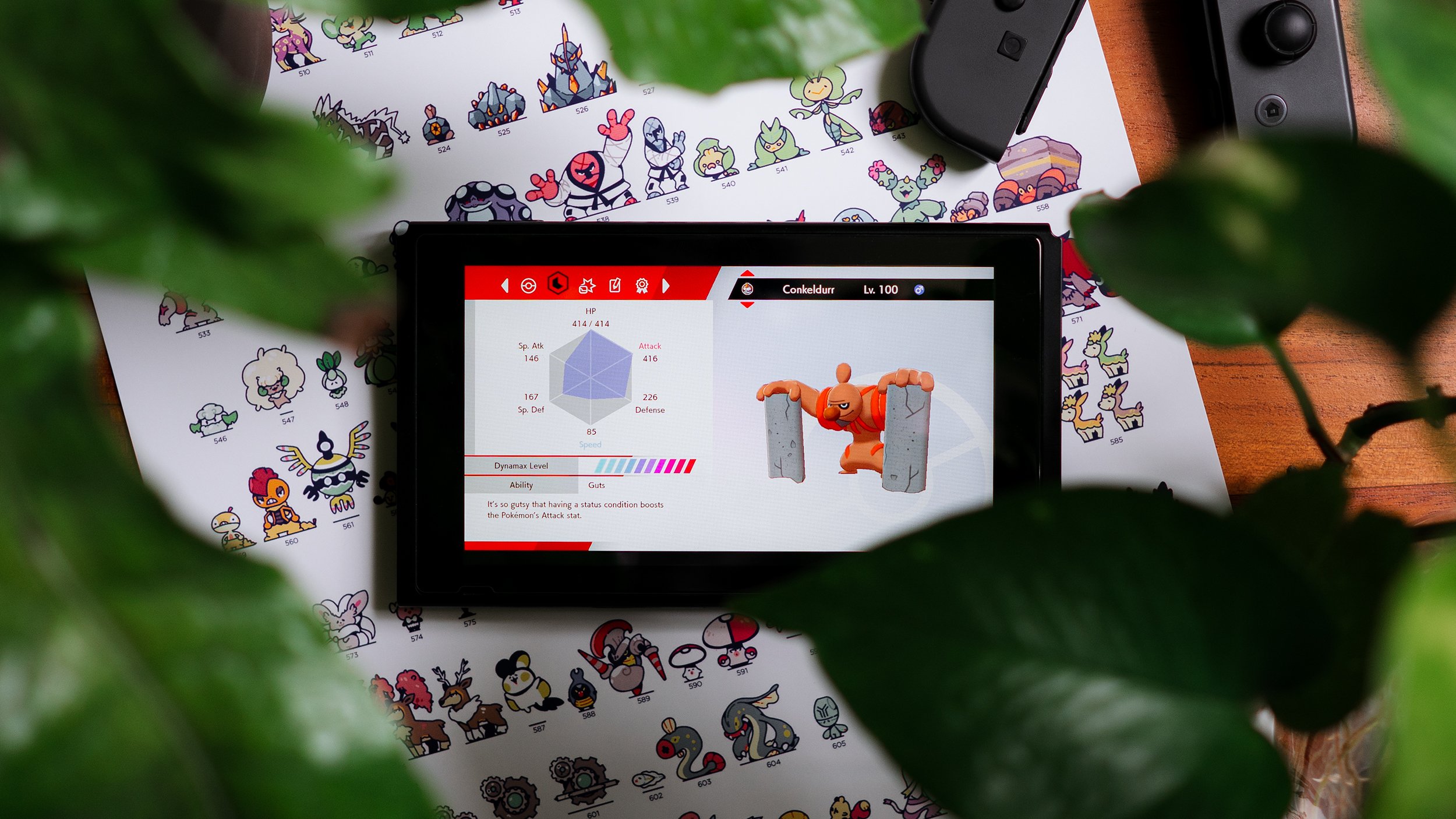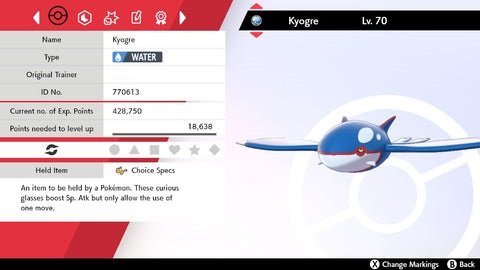
Items
9min read
Pokémon can play in a completely different way depending on the item that they’re holding– learn about the most popular and impactful items.
Written by Wolfe Glick
Teambuilding / Concrete Building Blocks
In this article, we’ll talk about what items we consider when we’re building a team, and help you find an item if you’re stuck. If you haven’t played competitively before, check out the “Basics of Items in Competitive Play” section. If you have, skip that section and continue to the “What Items Should I Use?” section.
Basics of Items in Competitive Play
When I tell people unfamiliar with VGC that I play Pokémon competitively, a question that quickly arises is: “So, do you just spam revives/potions”? While I always make sure to tell the asker that this is quite a good idea and I will try it next tournament, a trainer cannot use items during a competitive battle.
However, Pokémon can hold items, and use “held items” themselves. A held item is a subclass of general item - you “equip” them to a Pokémon, and they take effect during the battle. Items such as Potions, Revives, X-Accuracy, and many others are not held items and therefore cannot be used. For a full list of held items, click here.
VGC has several clauses, rules that affect the team you can legally bring to a tournament. One of these clauses is known as “item clause”, which states each item used on your team must be unique. Each Pokémon can hold one item, meaning competitive VGC teams will have a total of 6 different held items.
What items should I use?
Choosing an item can feel overwhelming. After all, there's quite a few possible held items, and you have to choose 6 distinct ones. Is this a fool's errand? Are you destined to stew in itemless purgatory indefinitely, suffering choice paralysis akin to selecting the best 6 ice cream flavors in a store with hundreds of options? Well, even though in theory there are hundreds of possible items, many of these should be immediately discounted when considering itemization. Many items are inferior versions of existing ones, such as Oran Berry VS Sitrus Berry. When considering whether an item is “good”, there are few things to consider.
First, consider how often your item is likely to activate. Some items are always active such as Choice Specs, Leftovers, Etc. whereas some need conditions to be met such as Sitrus Berry or Weakness Policy. Some items, such as Battery, Snowball, and Utility Umbrella aren’t going to come into play the majority of games.
Next, consider the benefit your item provides. The +1 boost you get from Absorb Bulb isn’t as impactful as the +2 boost from Weakness Policy, and is only marginally better than the boost Life Orb provides. Some items activate often, such as Big Root, but provide very little value. Furthermore, how good an item is depends largely on the Pokémon holding it. Focus Sash Shedinja is likely its best item, but Focus Sash Snorlax is going to be useless most of the time, because so few Pokémon threaten to take all of its HP in one turn.
Finally, consider the opportunity cost of your item. Is there a better item you could be using? One prime example of this is the Air Balloon item, which makes a Pokémon immune to ground moves until it is hit by an attack. This item is inconsistent - you may not be able to count on it to always be active when you need it - and smart players can maneuver around the effect. In this case, most Pokémon that want to hold an Air Balloon would fare better with Focus Sash or Shuca Berry.
There are no hard and fast rules when it comes to items, but these questions should give you some guidance when considering your items. In most formats, there are probably 10-15 held items that are common in most formats, with the rest being situationally strong. How good a specific item is depends largely on the Pokémon holding it and the rest of the metagame, but most items fall into 4 general categories-- recovery, damage output, damage mitigation, and support.
Recovery
It’s not rocket science - your Pokémon can’t battle when they run out of health, so people use items that recover HP. These include Sitrus Berry, Leftovers, and the berries that restore 33% of your health, which are the Figy, Mago, Aguav, Wiki, and Iapapa berries. Sitrus Berry is typically best on Pokémon with middling bulk to significant bulk - Pokémon that on average will take 2-4 hits to knock out. Leftovers is strongest when a Pokémon intends to stick on the field for multiple turns (at least 4 to offset the Sitrus Berry alternative), such as gradual setup sweepers like Calm Mind Tapu Fini that increase their bulk as well as their offense. Leftovers are also useful on Pokémon that have other forms of passive recovery such as Leech Seed or Grassy Terrain, as you get additional recovery from Protecting. Berries that restore 33% of your health are a good alternative to Sitrus Berry on Pokémon with significant bulk, as they’ll likely reach the activation threshold consistently. They can also be useful on Pokémon with a recoil move, as it is easier to activate these berries yourself in a pinch.
Damage Output
Don’t you want your Pokémon to do MORE DAMAGE!?!?! Well, thanks to these items, they can! Some examples of damage output items include Life Orb, Choice Specs/Band, Weakness Policy, and type-boosting moves such as Miracle Seed or Mystic Water. Where these items belong depend largely on the format, but in general it’s important to consider the power vs drawback balance. The strongest of these items (Choice items and Life Orb) have somewhat sizable drawbacks that the weaker alternatives lack, but in exchange offer more power. When deciding on which item you want, consider how the drawbacks affect the Pokémon you’re itemizing. A Pokémon that clearly has a best move whose primary goal is to do damage and doesn’t need defensive options like Protect may be better off with a Choice item. A Pokémon that runs multiple moves of the same type and also values a defensive option or the ability to switch moves may prefer a type boosting item.
EXAMPLE
In the VGC2021 Series 10 format, Kyogre would sometimes run the Choice Specs item. This is a good item for Kyogre as Water Spout is a very powerful move, and when paired with the Rain, STAB, and Choice Specs boost the damage output is significant.
In this same format, some people started to run Mystic Water Urshifu-Rapid-Strike. This Urshifu would choose to invest in its defenses, and would take advantage of its natural defensive typing to consistently output damage with Surging Strikes. Mystic Water allowed Urshifu to finish low HP Pokemon off with Aqua Jet, as well as allowing it to Protect when feeling threatened. The additional power a Choice Band would provide was not worth the lack of defensive utility provided by allowing Urshifu to switch moves.
Damage Mitigation/Survivability
Survivability items don’t restore health, but they do allow your Pokémon to stick on the field longer by reducing incoming damage. These items include Assault Vest, type resist berries such as Shuca Berry and Coba Berry, and other items such as Focus Sash and Eviolite. These items are good on Pokemon that need help staying on the field for whatever reason, and attempt to reduce a specific weakness to provide longevity. Survivability items can be used either to increase a somewhat bulky Pokémon’s staying power, or to allow a frailer Pokémon another turn on the field.
Support
Support items that typically bolster something about a Pokémon that doesn’t fit into one of the other 3 categories. Some of the better examples include Safety Goggles, Lum Berry, and Light Clay. These are items that have a specific purpose– help with powder moves, help with sleep, or increase the duration of Light Screen/Reflect. As such, the types of Pokémon they excel on depend largely on the niche being filled.
How do I choose an item for my Pokémon?
Nearly every good item choice on a Pokémon will do one of two things for a Pokémon: bolster a strength or mitigate a weakness. Let’s look into these a little deeper.
Bolster a strength
Does your Pokémon naturally threaten high amounts of damage? Consider adding a Choice Band, Choice Specs, or Life Orb to become even more threatening
Is your Pokémon threatening because it outputs big damage and also has good staying power? Consider a type boosting item like Magnet or a Sitrus Berry
Is your Pokémon a defensive wall who whittles away at opponents over time, such as Ferrothorn or Celesteela? Consider increasing its staying power with Leftovers.
Is your Pokémon most threatening when moving first? Consider the Choice Scarf item.
These are just a few examples of things you might consider when augmenting something your Pokemon does well. Experiment with different items so you can learn which Pokemon they are strongest on.
Mitigate a Weakness
Is your Pokémon weak to a common type in the Metagame? Consider a type-resist berry such as Shuca Berry
Does your Pokémon need help staying on the field longer and could benefit from more Special Defense? Consider an Assault Vest
Is your Pokémon fast and frail and finds itself getting knocked out in one hit? Consider a Focus Sash
Is your Pokémon getting KO’d in two hits often? Consider adding a Sitrus Berry
Does your Pokémon keep getting put to sleep by Spore or Sleep Powder? Consider adding Safety Goggles.
It’s worth noting that these questions are about the Pokémon we’re using, not the items themselves - you can add the same item (such as Sitrus Berry) to either bolster a strength or mitigate a weakness. As you get more experience with Items it will become easier to identify what each of your Pokémon needs!
Wrapping Up
If you’re just getting started in VGC, I recommend seeing which items are popular and staying mostly inside that box. As your game knowledge progresses, you can start thinking about items more conceptually and identifying the situations where a less conventional item may be appropriate. I hope this guide gives you the tools to think about itemization and the specific job your items are doing.


